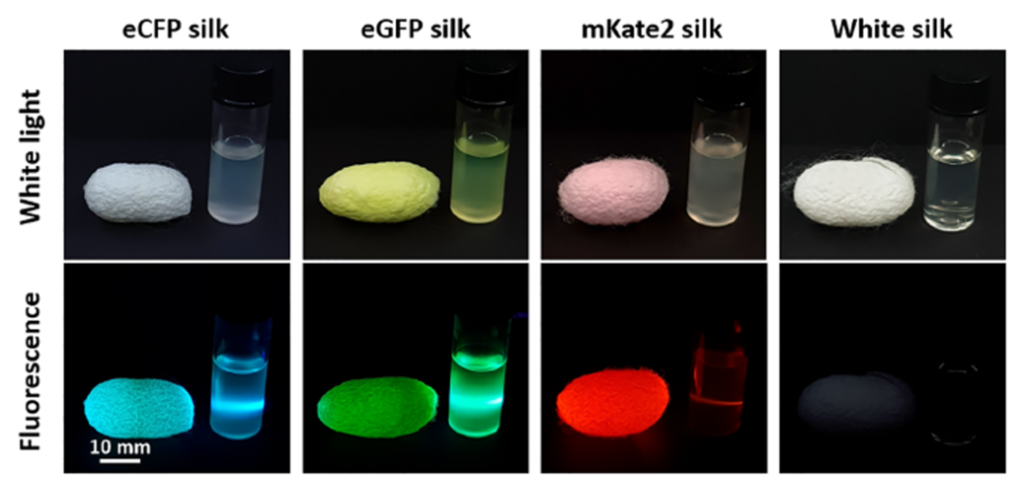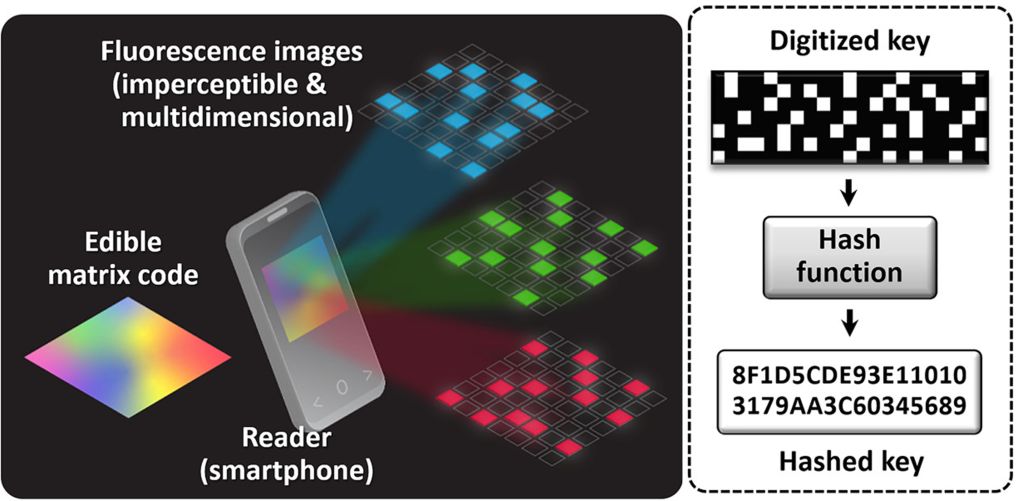When it comes to counterfeit medication, the stakes are high for both the manufacturer and the consumer. Manufacturers lose income and reputation, leading to a lower incentive for R&D ventures. Consumers are potentially exposed to life-threatening compounds through loss of quality control, and their purchase may not even provide the benefits that drove them to seek out said drug. But while the impact of counterfeit medication is well-understood, police and forensic scientists lack tools to track down these counterfeit meds beyond common sense checks and external packaging.
Researchers at Purdue University collaborated with South Korea’s Institute of Agricultural Sciences to develop a multilayered approach to subtly mark medication bottles, or even the medication itself (either in pill form or liquid) for authenticity. The scientists first synthesized edible tags made of silk fibrils – these can be shaped into squares and attached to medication bottle lids or put into the liquid medication itself. But the silk tag is not just white; the scientists attached various fluorescent proteins to the fibrils to produce different colors under UV light. These included cyan fluorescent protein (CFP), green fluorescent protein (GFP), and Kate2. Under white light, these silks appeared blue, yellow, and pink respectively, while under UV light, they turned bright cyan, green, or red (Fig 1).


The researchers did not stop there though. They arranged their silk squares into colored grids to form a fluorescent pattern – an invisible code. They designed the code to be read by a smartphone app as a digital key like a QR code (Fig 2 and movie), which provides an additional layer of product protection. Take a look at the demo they created for their system in the video below!
The scientists clearly demonstrated that these tags worked as authenticity markers – but there were a few caveats they had to address before scale-up and commercialization could happen. Firstly, the tags could not interfere with the medication function. Secondly, the tag must be nontoxic to our cells. Thirdly, the tags must be stable enough to last in the medication for as long as the medication shelf-life. Therefore, not only did they create a multilayered and invisible authenticity check, but the scientists also assessed these factors before sharing their findings.
Leem et al. had already solved the first problem and partially solved the second problem with the selection of silk. Silk is a natural, unreactive, stable polymer that produces minimal inflammation or immune reaction from the human body. Silk polymers are also stable enough that it would not degrade and mix with the medication in solid or liquid form – otherwise silk clothing would also be an issue.
But the second problem was an unusual one, as people do not normally eat things made of silk – could we digest the tags in an efficient manner? Using trypsin and pepsin, the major digestive enzymes in the stomach, the researchers crafted a simple test to evaluate if silk would pass in its intact form through the stomach (Fig 3 top). They found that both of the enzymes turned their silk squares into tiny, almost nonexistent particles after just an hour. Furthermore, the tags had no impact to red blood cells as determined by a standard medical assay called a hemolysis test, emphasizing their safety for ingestion (Fig 3 bottom).

Finally came the test to determine the longevity of the silk tags. The scientists exposed the tags to white light 10x the strength of normal fluorescent light in a commercial office building. No degradation was seen to the fluorescence code until after 210 hours or ~9 days. This indicated that the invisible code could last for several weeks under normal light, but opaque or dark packaging would be required to extend the shelf-life to months or years. Leem et al.’s ingenious method of marking authentic medication, either on the medication bottle or the medication itself (liquid or solid pill), can effectively combat counterfeit medication with a brightly colored, edible matrix code.
| Title | Edible Matrix Code with Photogenic Silk Proteins |
| Authors | Jung Woo Leem, Hee-Jae Jeon, Yuhyun Ji, Sang Mok Park, Yunsang Kwak, Jongwoo Park, Kee-Young Kim, Seong-Wan Kim, Young L. Kim |
| Journal | ACS Central Science |
| Year | 2022 |
| URL | https://pubs.acs.org/doi/10.1021/acscentsci.1c01233 |
